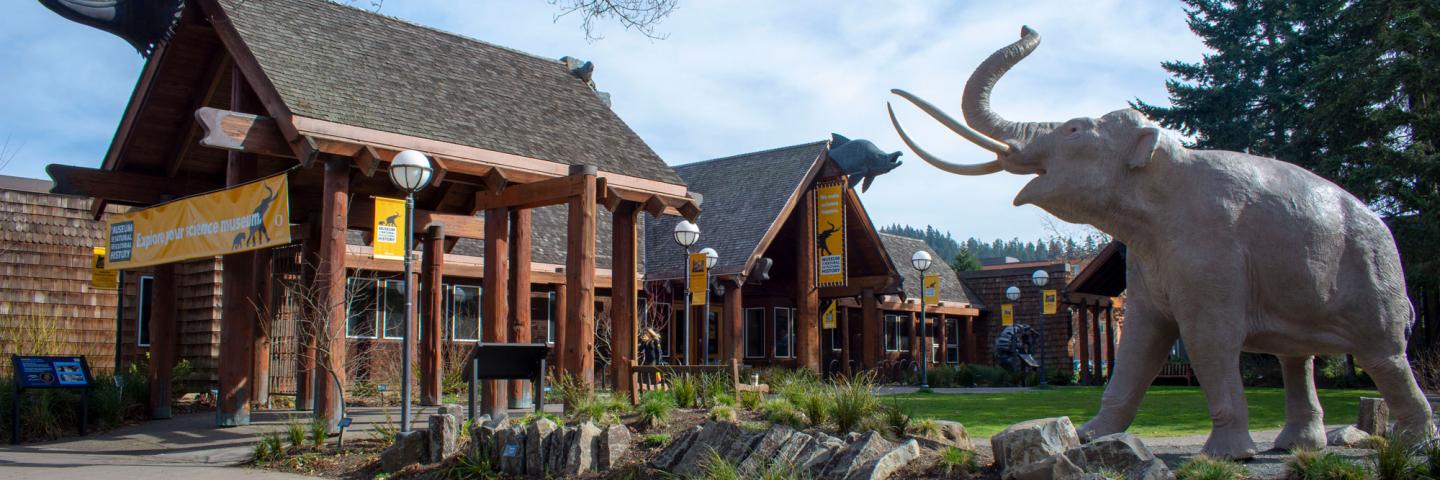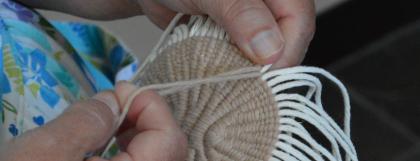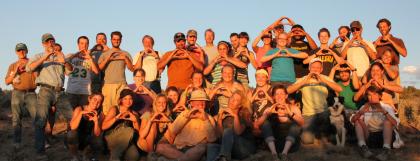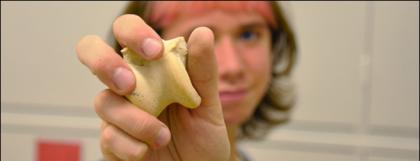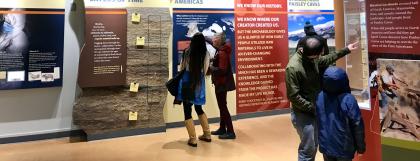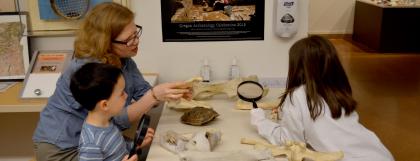OUR MISSION
The Museum of Natural and Cultural History enhances knowledge of Earth's environments and cultures, inspiring stewardship of our collective past, present, and future.
The museum is a center of interdisciplinary research and education, serving the State of Oregon, the University of Oregon, Native American Tribes, the research community, K-12 students and teachers, and the wider public in Oregon and beyond.
An established major engine of archaeological research in the American West, the museum’s Archaeological Research Division works across the state on dozens of archaeological projects each year. Our work has enhanced our understanding of North America’s earliest inhabitants and uncovered stories nearly lost to history. Museum archaeologists are committed to working with Tribes, the state, and federal and local agencies to ensure collaborative knowledge sharing.
Today, the MNCH is the State of Oregon's official repository for publicly owned collections and is home to hundreds of thousands of ethnographic and archaeological objects, fossils, and biological specimens from Oregon and around the world. Samplings of these collections are available in our collections galleries.
The museum welcomes more than 30,000 visitors annually and serves another 20,000 Oregonians through its statewide outreach programs. A winner of the 2018 National Medal for Museum and Library Service, the museum is fully accredited by the American Alliance of Museums, distinguishing it as one of the very best museums in the nation.
The Museum employs a staff of approximately 50 faculty, researchers, classified, administrative, and student employees across several facilities on the University of Oregon, Eugene campus. Annual expenditures are about $3 million, from dozens of funding sources and allocated among a variety of projects across four museum divisions.
Origins
Officially created in 1935-36 as the Oregon State Museum of Anthropology and Museum of Natural History, the museum has its roots in the late 1800s, when geologist Thomas Condon joined the University of Oregon as one of its first three professors and brought his extensive fossil collection to the UO. Known as the Condon Fossil Collection, the assemblage remains at the heart of the museum's paleontological collections. During the 1930s, archaeologist and founding director Luther Cressman began the museum’s tradition of cutting-edge research.
